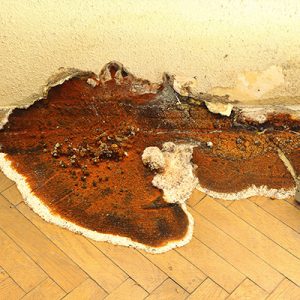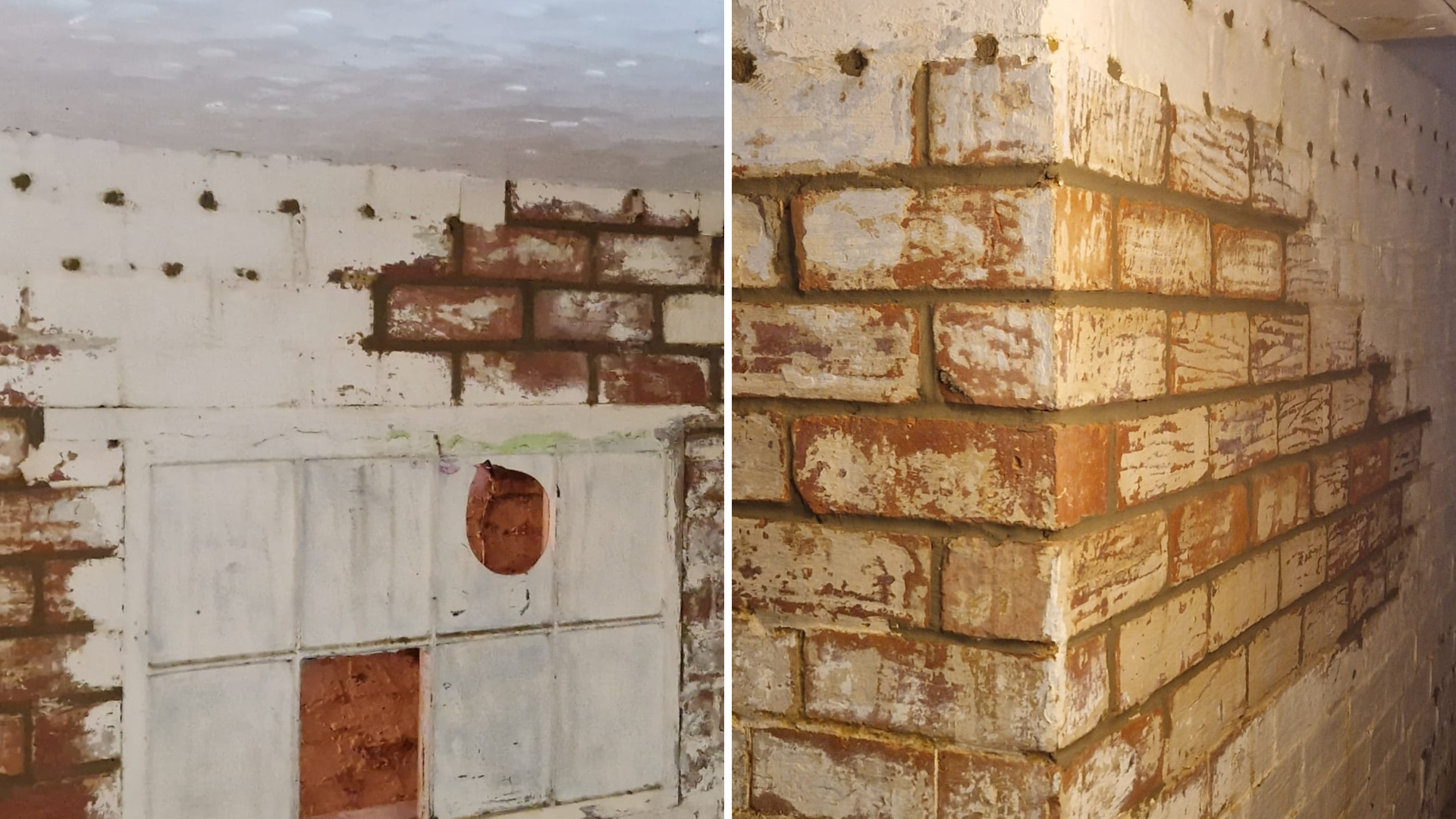Dry rot is the most voracious and damaging form of damp rot you can get in your home. This is the rot that can pass from one material to another without the need of damp to continue it’s damaging journey throughout your house.
Why does dry rot occur?
The spores of dry rot exist in the atmosphere. They only become problematic when the right conditions exist for them germinate and grow. This is commonly damp timber with a moisture content of around 20%, and reasonably good airflow. Period homes often offer these perfect conditions, especially under suspended wooden floors and in cellars. Leaking gutter and downpipes can be the source of damp, as can penetrating damp from a bridged damp proof course or flooding, and rising damp from non-existing damp proof courses.Identifying dry rot
As dry rot requires a source of damp at its root cause, it is likely that this will be the first place to show the tell-tale signs…
The picture above shows a classic example of dry rot. You can see how the fungus is spreading out in a flat, fan shape, with a darker, rust coloured centre and white edge.
Dry rot is caused by the fungi Serpula Lacrymans – the true dry rot fungus and always presents in the same way, so can be easily identified.Dry rot treatment
It is essential that dry rot is identified and treated as quickly as possible to prevent it spreading through your home and causing further damage. You must act quickly to protect your home! Dry rot treatment is safe and easily treats the fungus to prevent damage caused to the structure of your home.- A detailed (free) inspection will be undertaken by a damp specialist who will carry out an external and internal investigation of your home
- You must remove as much of the surrounding materials, such as furniture, shelves, carpets etc as you possibly can
- Upon our arrival, we will remove the materials infected by the dry rot and clear an area of a square meter around it. This includes plaster board and timbers
- A toxic box is installed which involves drilling holes into the masonry around the dry rot, and injecting an antimicrobial compound into the holes so it saturates the brickwork
- We spray the surfaces of the affected area with the same biocide
- Then we begin the reconstruction of the affected area, using treated timbers, waterproof plasterboard and plaster, and treated skirting board/architrave.

